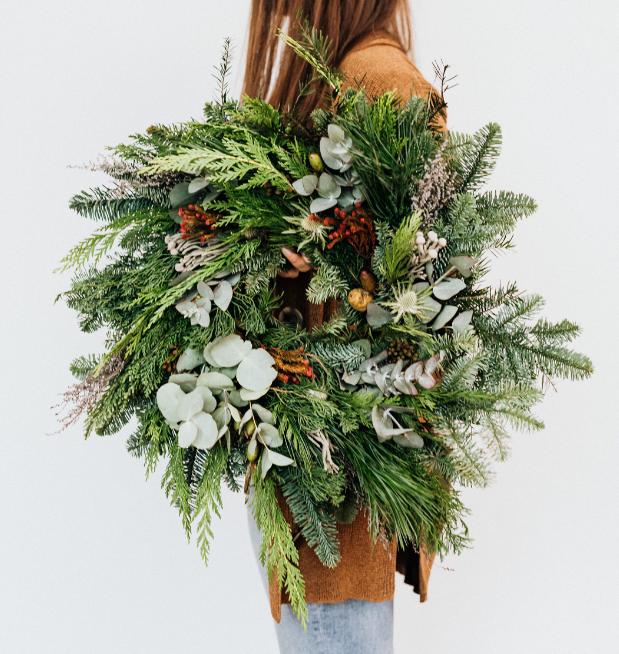A STAPLE OF CHRISTMAS FESTIVITIES

Despite the use of wreaths in pagan worship in the past, they are now typically associated with Christmas. In a sense, we can thank the evergreen tree for originating the Christmas wreath; in the sixteenth century, people in northern and eastern Europe began to bring evergreen trees into their homes to celebrate the wintery holiday of Christmas. The evergreens generally had to be trimmed to fit into a room and to look more uniform to add a cozy atmosphere to Christmas Eve. Along with the invention of the Christmas tree, Christmas wreaths were introduced.
At a time when waste was frowned upon, the parts of the tree that were trimmed off were woven into a circular shape, called a wreath. Christmas wreath making soon became a common practice whenever the holiday came around.
CHRISTMAS WREATHS

People admired evergreens because they could survive harsh winter weather. Weaving evergreen limbs into a circular shape was a symbol of eternal life used by many European Christians. Wreaths became a key custom of Christmas celebration in Christian communities, especially when the Lutheran church introduced the tabletop wreath, also known as the Advent wreath.
Advent is a four-week time period before Christmas set aside by many Christian denominations, including Roman Catholics, Anglicans, Episcopals, Lutherans, and also some Protestants. As Christmas approached, an evergreen wreath would be placed on a flat surface, usually a table, and decorated with lit candles to symbolize the light of Jesus brought into the world on Christmas day. Each of the candles on the Advent wreath has its own significance.
THE FIVE CANDLES OF THE ADVENT WREATH
There are generally a total of five candles on Advent wreaths. Three of these candles, usually purple, stand for peace, hope, and love, which are foundational principles of Christianity. A red candle, in the wreath along with the purple, is lit to symbolize the blood of Christ shed on the cross when He was crucified. The fifth candle is white and stands in the center of the wreath, symbolizing the purity of Christ’s incarnation and Virgin Birth. Together, the five candles are a representation of the light of the gospel of Christ that entered the world on Christmas day.
WHY A WREATH?

The materials of advent wreaths also hold their own significance. Holly berries and holly leaves are used to symbolize the crown of thorns that was laid on Jesus’ head during the crucifixion. The red berries represent His blood that was shed, and laurels show His conquest over pain, suffering, sin, and death. In addition, pine, holly, and yew stand for eternal life and cedar, pinecones, seeds, nuts, and fruit symbolize the renewal of life.
Even the circle shape of the wreath played a role in this staple of Christmas traditions. Not only was the donut-shaped decoration easy to hang on the branches of the tree, but it also had spiritual meaning. The circle is an infinite shape that stood for divine perfection and eternity following Christ’s second coming. It brought with it the hope of eternal life with God after worldly death. The advent wreath was a constant reminder of God’s unending love for his people in the sacrifice of His Son.
YULE CELEBRATION
Although Christmas wreaths are the most popular, wreaths were also used in pagan celebrations. In ancient Germany and some Scandinavian countries, evergreen wreaths marked the winter solstice of Yule. Yule is a 12-day holiday when people celebrate the return of the sun and the cycle of the seasons. The greenery and natural materials of the wreaths stood for nature and the promise of new life that came with spring. Some people also lit candles on their wreaths to welcome the warmth and sunlight of the new season. Today, the word “yule” can be interchangeable with Christmas.
To read full blog: https://wreathsacrosscanada.ca/blogs/news/the-history-of-wreaths




